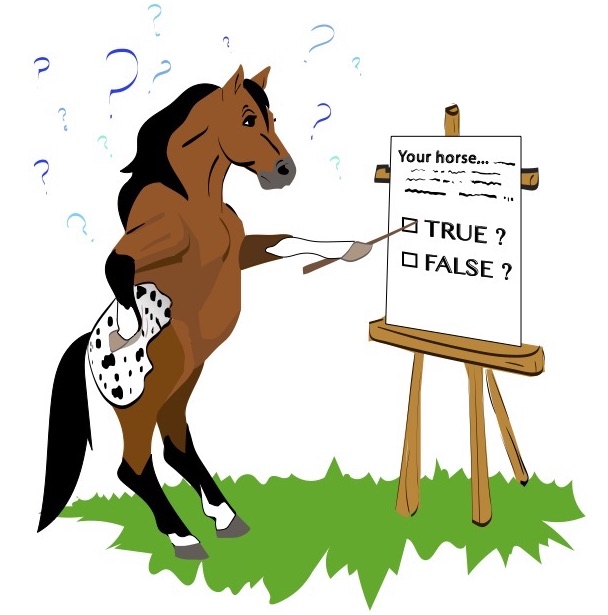
1. Which of the following can cause quarter cracks in a horse’s hoof?
A) Excessive grass consumption, ill-fitting bell boots, traveling over rocks, calcium deficiency.
B) Trauma to the coronary band, poor conformation, thin hoof walls, incorrect hoof care.
C) All of the above.
2. True or false. Quarter cracks occur in the toe of the hoof.
T / F
3. True or false: Horizontal cracks in a horse’s hoof wall are caused by injuries at the hairline (coronary ridge).
T / F
4. True or false: Preventing horizontal hoof cracks is as simple as making sure your horse’s hooves receive correct trimming at regular, 4- to 6-week intervals.
T / F
HOW’D YOU DO? (Answers below.)
1. B is correct. Quarter cracks have various causes, including trauma to the coronary band, poor conformation resulting in imbalanced weight-bearing, thin hoof walls, and incorrect hoof care that results in imbalanced feet and/or an improper footfall.
2. F is correct. Quarter cracks occur not in the toe but in the side (or “quarters”) of the hoof. Typically vertical, they start at the coronary band and run downward. Most often quarter cracks begin inside the hoof before presenting visually on the outside.
3. F is correct. A split caused by trauma at the hairline is typically vertical—like a quarter crack. By contrast, horizontal cracks are most often caused by abscesses affecting the white line (the junction of the hoof wall and the sole, visible as the narrow, light-colored band on the underside of a freshly trimmed hoof). Such abscesses rupture at the hairline, then the resulting crack migrates down with the wall growth to be trimmed off eventually.
4. T is correct. Trimming strategies (whether or not the hooves are also shod) should produce healthy hoof horn that doesn’t “flare” and well-maintained bars with tight connecting tissue. This, in turn, will reduce or eliminate the abscesses that lead to horizontal cracks.
[LEARN MORE about quarter cracks AND horizontal cracks.]
Hey! Not already receiving H&R’s fun, informative, and free weekly newsletter? Sign up right now for The Ride.






